In our ongoing effort to provide you with valuable performance insights that promote success in your digital business, Dynatrace now offers an expanded selection of performance metrics on which you can base your real-user monitoring. While User action duration was once the primary metric used for web-application monitoring, you can now select from new metrics like Visually complete, Speed index, DOM interactive, Time to first byte, and Load event end. Now you can pick the ideal metric for each application you monitor.
Why the change?
User action duration was long considered to be the best metric available for web-performance optimization. But times have changed.
- In the past, developers were primarily focused on the amount of time from user input to complete page load. While this is still true for some traditional web applications, we now have Single Page Applications (SPAs) based on Angular, Ember, React, and other JavaScript frameworks that don’t depend on loading a new page following each click.
- The race to be fast “above the fold” can lead to high overall User action duration times. Better metrics to focus on are Visually complete and Speed index. From the end user perspective, web applications may be usable only after certain elements such as a date-picker or auto-complete for a search are ready to use.
- For internal applications such as a call center app or CRM app, end users know the UI inside out and therefore won’t wait for a button to be clickable. In these cases, JavaScript loading is important and DOM interactive may be the best metric to consider.
Dynatrace key performance metrics enable you to respond to such variable conditions. You can now specify the key performance metric that’s most appropriate for each specific web application. Visually complete is the default metric for page load actions and XHR actions, but you can select a different key performance metric, thereby changing the performance-analysis thresholds applied by the Dynatrace AI during automated problem detection.
Another reason for key performance metrics is that you may expect to see varying performance levels for different features of your web application. So, User action duration may not be enough. For example, a customer may be satisfied waiting five seconds after clicking a Confirm booking button, but be frustrated waiting five seconds for the auto-complete box of a search field to pop up. With key performance metrics and key user actions, you can now define the right key performance metric and expected performance goals for each separate user action.
Get started with key performance metrics
For Dynatrace environments version 144 and above:
- Key performance metrics are activated by default
- Visually complete is selected as the key metric for load and XHR actions
- User action duration is selected as the metric for custom actions
For existing environments newer than version 144:
- The Applications page invites you to enable key performance metrics (see example below)
- The new capabilities will be made available once you click the Enable key performance metrics button.
The Application settings page enables you to pick the best key performance metric from a list.
- Available Load action metrics include: User action duration, Visually complete, Speed index, DOM interactive, Load event end, Load event start, HTML downloaded, and Time to first byte.
- Available XHR action metrics include: User action duration, Visually complete, Response end, and Time to first byte.
See key performance metrics in action
Several dashboard tiles (for example, World Map, User Action, and Key user actions) are affected when you select a different key performance metric. The metrics are also available for custom charting.
The Application overview page shows Visually complete by default for load actions and XHR actions. User action duration is used for Custom actions.
The User action page, when Speed index is selected as the key performance metric, reflects Speed index in all tiles and charts.

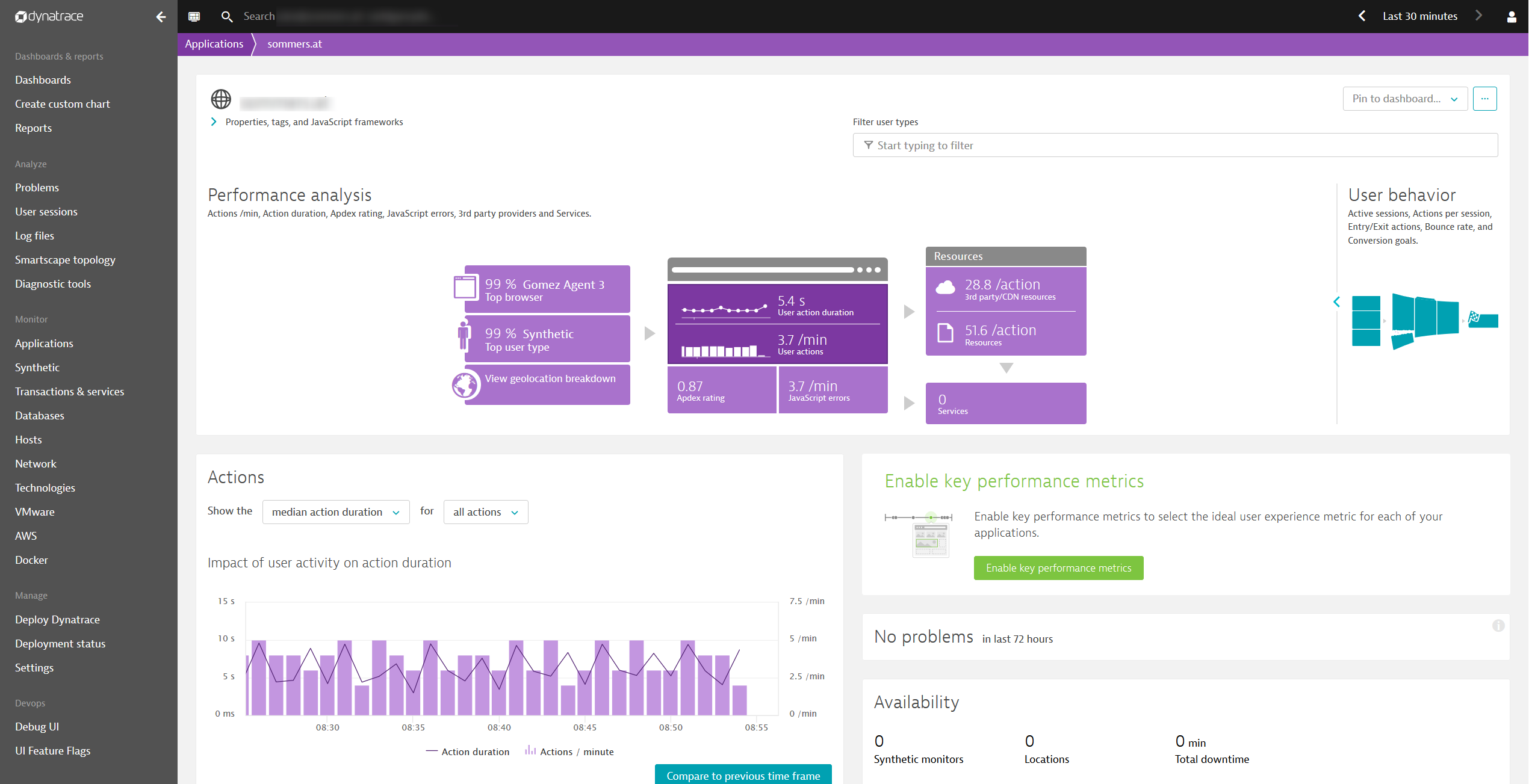
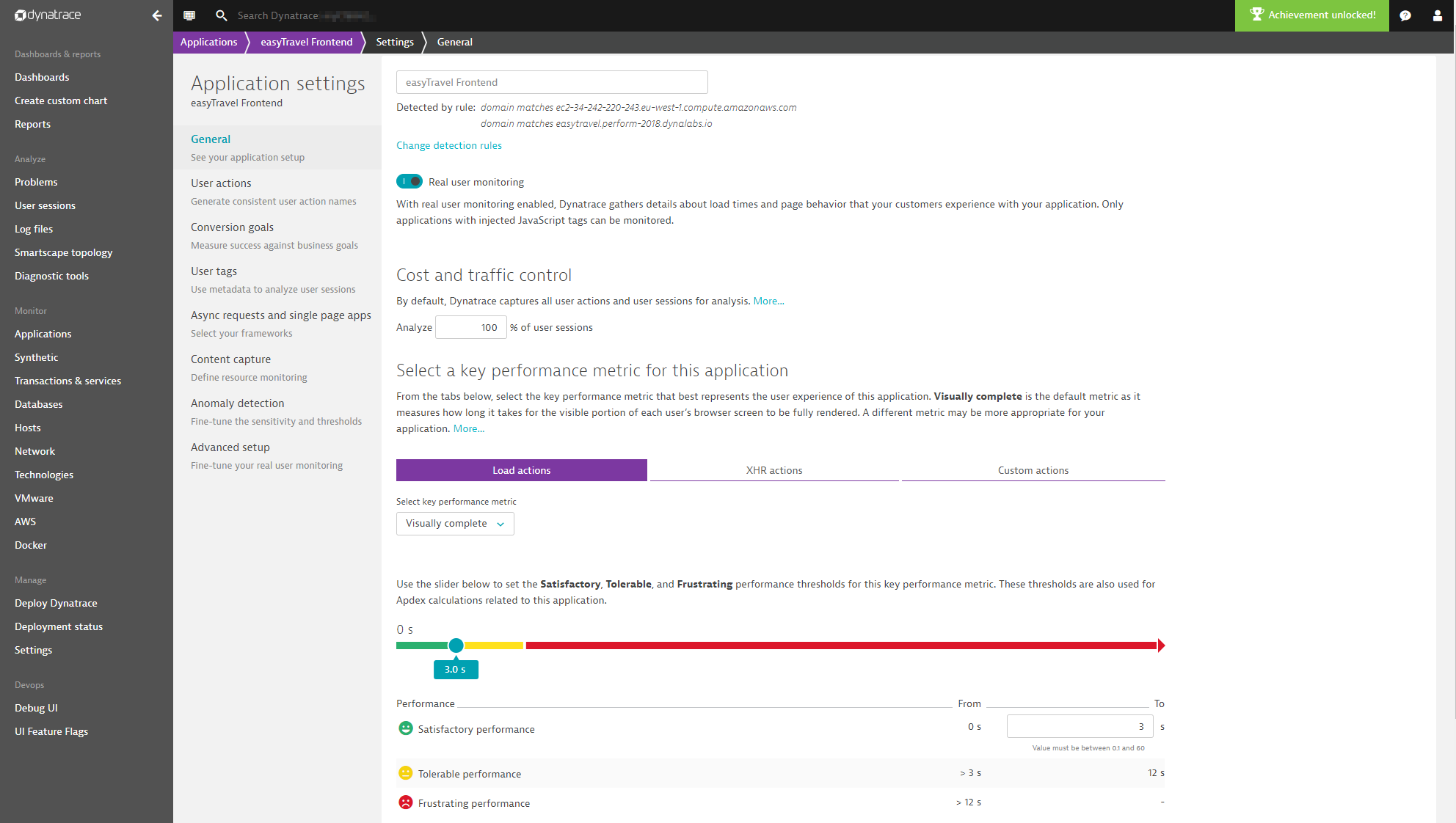

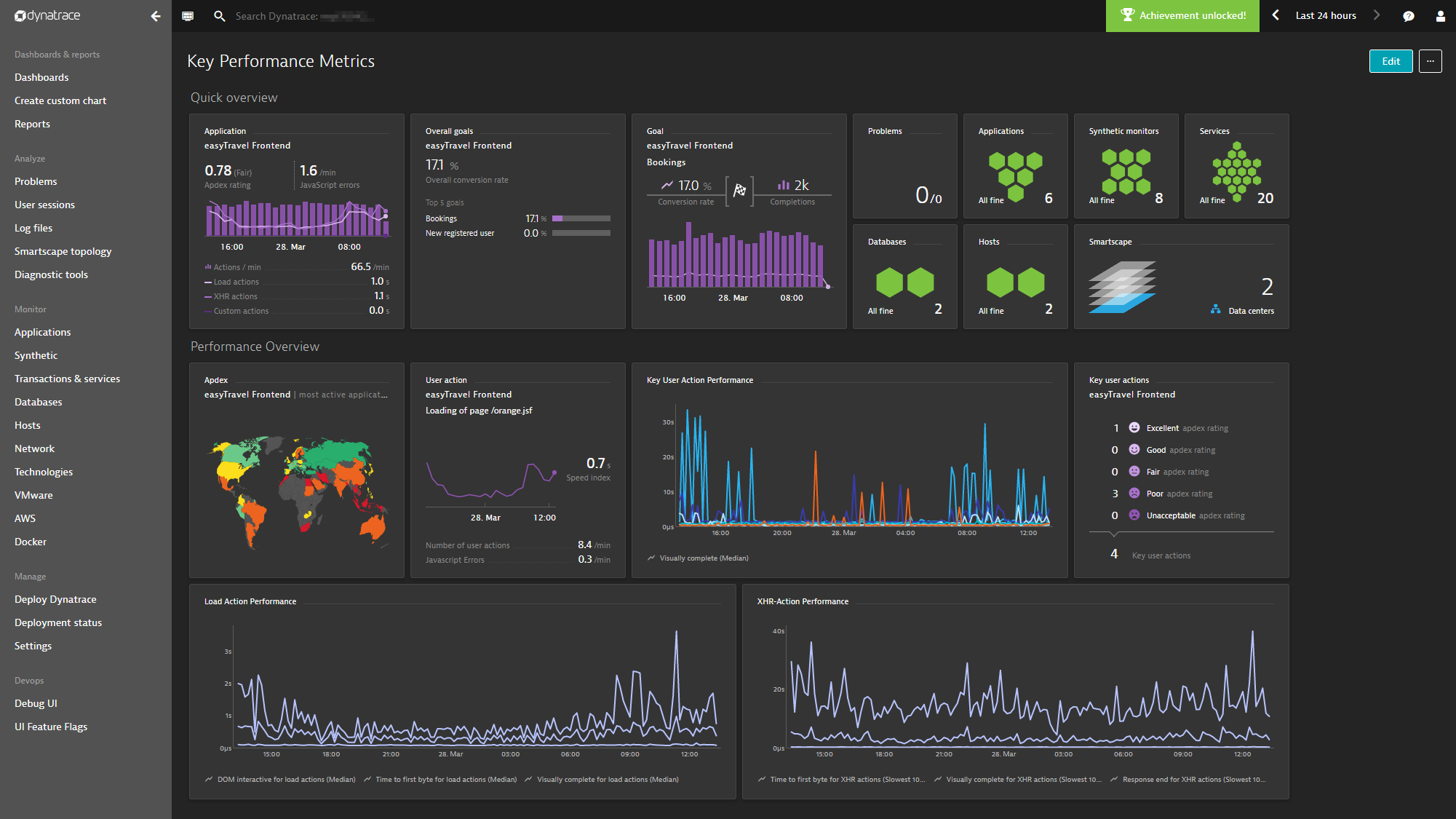
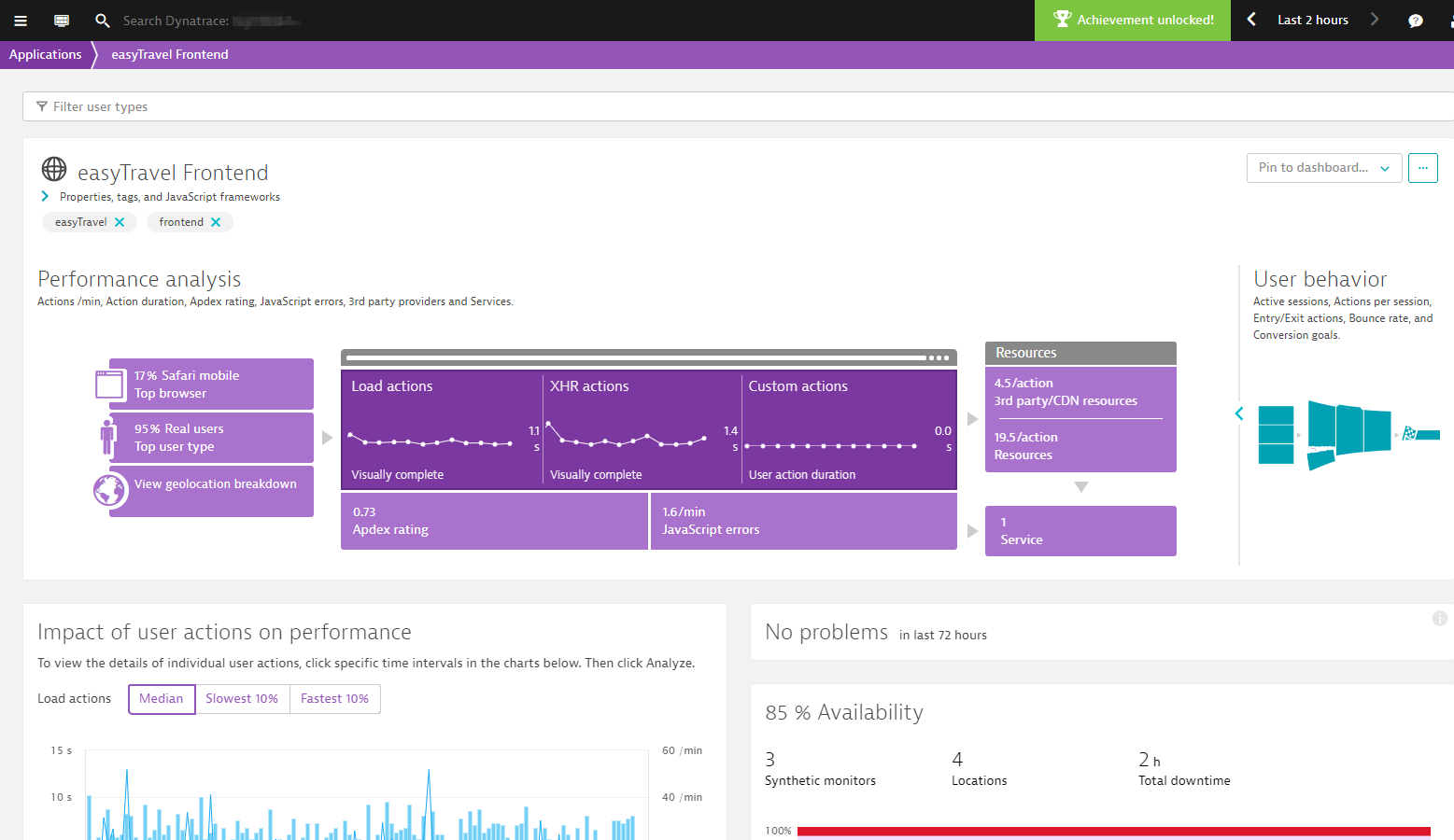
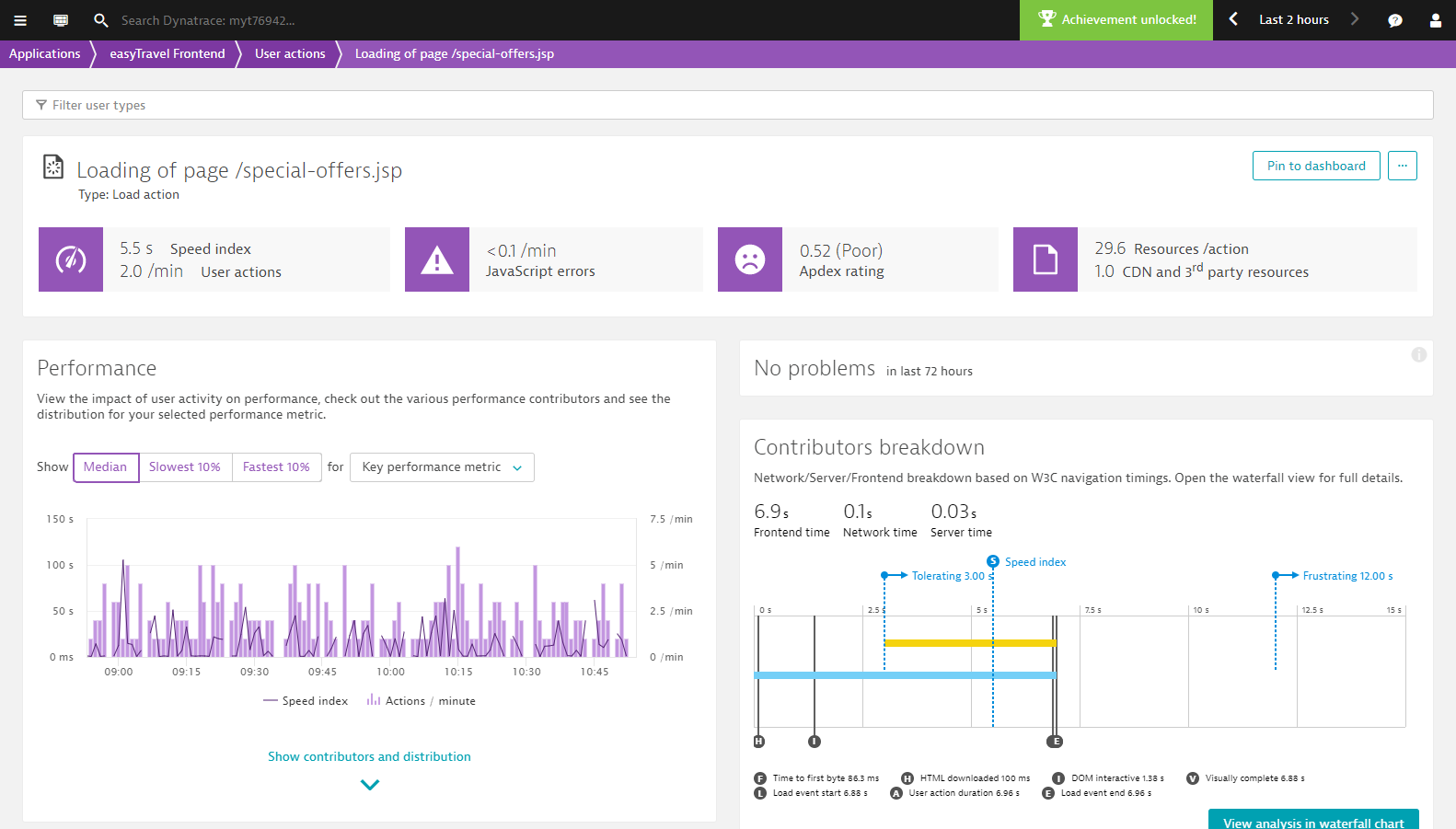




Looking for answers?
Start a new discussion or ask for help in our Q&A forum.
Go to forum